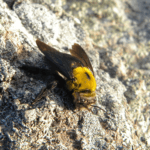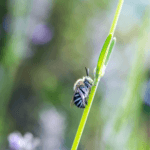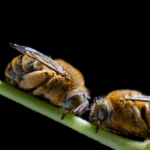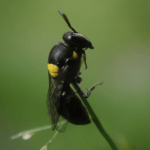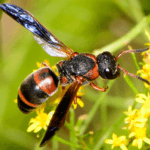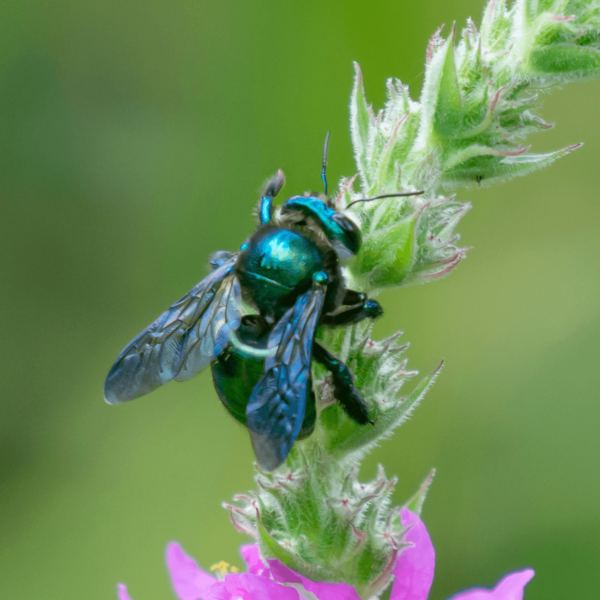
Emerald Artisans of Nature: Unveiling the Green Carpenter Bee
In the tapestry of Australian biodiversity, the green carpenter bee (Xylocopa aerata) emerges as a resplendent jewel, its metallic emerald green body glistening under the sun’s rays. These remarkable insects, with their robust build and buzzing presence, are not only captivating to behold but also play a vital role in maintaining the delicate balance of Australian ecosystems.
Solitary Craftsmen: Constructing Homes within Nature’s Embrace
Green carpenter bees are solitary creatures, each female meticulously constructing her own nest. Unlike their social counterparts, the honeybees, they do not form colonies or hives. Instead, they embark on solitary endeavors, crafting their nests with remarkable precision to provide a safe haven for their offspring.
These industrious insects prefer to nest in soft, dead wood, often in the trunks of dead trees or in the stalks of dry grass trees. With their powerful jaws, they diligently excavate tunnels, creating a series of chambers that will serve as nurseries for their larvae. Each chamber is meticulously lined with a mixture of wood fragments, pollen, and nectar, providing a rich source of nourishment for the developing larvae.
Pollinators of Promise: Ensuring the Future of Australian Flora
Green carpenter bees are not just skilled nest builders; they are also dedicated pollinators. Their bodies are covered with fine hairs that attract and hold pollen grains. As they flit from flower to flower, collecting nectar for their offspring, they inadvertently transfer pollen from one plant to another, enabling fertilization and the production of fruits and seeds.
These industrious insects play a crucial role in the pollination of a wide variety of Australian plants, including native wildflowers, legumes, and fruit trees. Their contribution to pollination is essential for the health and diversity of Australian ecosystems, ensuring the continued survival of countless plant species and the animals that depend on them.
Gentle Giants: Appreciating the Green Carpenter Bee
Despite their intimidating appearance and buzzing presence, green carpenter bees are generally docile creatures, posing little threat to humans. They only sting in self-defense when provoked or threatened. Their preference for nesting in dead wood often keeps them away from human dwellings, but if they do venture into homes or gardens, they can be safely relocated.
If you encounter a green carpenter bee in your garden or neighborhood, take a moment to appreciate its beauty and the vital role it plays in the ecosystem. Observe its intricate movements, its shimmering emerald hue, and its industrious nature, and recognize the significance of these gentle pollinators in maintaining the balance of nature.
Preserving the Emerald Buzz: Protecting the Green Carpenter Bee’s Habitat
As we marvel at these captivating creatures, let us also remember the importance of conserving their habitat. By protecting native vegetation, minimizing the use of pesticides, and avoiding the burning of native bushland, we can ensure that green carpenter bees continue to thrive in their natural environment, their vibrant wings carrying life and sustenance to the diverse flora of Australia.
What should I do if I see a Green Carpenter Bee?
Contact Us if you ever see green carpenter bee in your home. Our expert team will assist you the same day.

